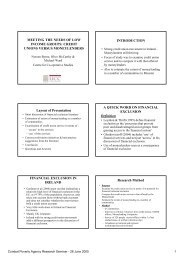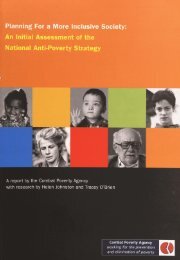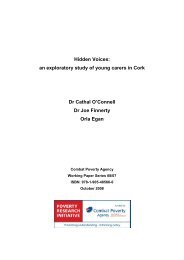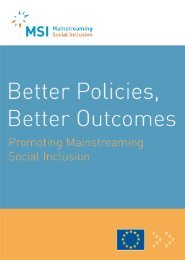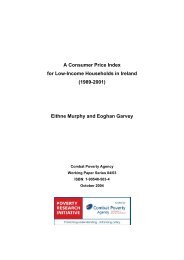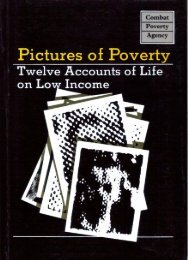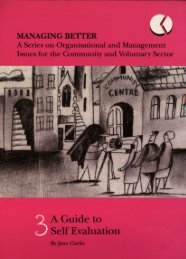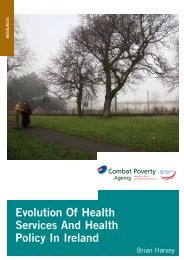The Distribution of Income in Ireland (2000) - Combat Poverty Agency
The Distribution of Income in Ireland (2000) - Combat Poverty Agency
The Distribution of Income in Ireland (2000) - Combat Poverty Agency
- No tags were found...
Create successful ePaper yourself
Turn your PDF publications into a flip-book with our unique Google optimized e-Paper software.
66 <strong>The</strong> <strong>Distribution</strong> <strong>of</strong> <strong>Income</strong> <strong>in</strong> <strong>Ireland</strong>goes up only to 1994, but it provides a valuable comparativecontext <strong>in</strong> which to see the Irish experience up to that po<strong>in</strong>tand beyond.Chapter 6<strong>The</strong> <strong>Distribution</strong> <strong>of</strong> Earn<strong>in</strong>gsBrian Nolan6.1 INTRODUCTIONIn this chapter we move from the distribution <strong>of</strong> <strong>in</strong>come amonghouseholds to the distribution <strong>of</strong> the largest element <strong>in</strong> <strong>in</strong>come,namely employee's earn<strong>in</strong>gs, among those employees. Sharplywiden<strong>in</strong>g <strong>in</strong>equality <strong>in</strong> earn<strong>in</strong>gs <strong>in</strong> the United K<strong>in</strong>gdom and theUnited States <strong>in</strong> the 1980s and 1990s has been a major preoccupation<strong>in</strong> recent research on <strong>in</strong>equality <strong>in</strong> those countries, andhas been attributed much <strong>of</strong> the responsibility for ris<strong>in</strong>g <strong>in</strong>equality<strong>in</strong> the distribution <strong>of</strong> total <strong>in</strong>come among households.Attempts to expla<strong>in</strong> this <strong>in</strong>creas<strong>in</strong>g earn<strong>in</strong>gs dispersion havehighlighted ris<strong>in</strong>g returns to education and skill. 1 This <strong>in</strong> turnhas been attributed to a shift <strong>in</strong> demand towards more skilledlabour due to factors such as skill-biased technical change (Kateand Murphy, 1992) and globalisation and competition from develop<strong>in</strong>gcountries (Wood, 1994). 2 Some <strong>in</strong>dustrialised countrieshave experienced much smaller <strong>in</strong>creases <strong>in</strong> <strong>in</strong>equality,however, while others aga<strong>in</strong> have ma<strong>in</strong>ta<strong>in</strong>ed stability <strong>in</strong> theirearn<strong>in</strong>gs distributions (OECD, 1993 and 1996b), which has fo-See for example Gosl<strong>in</strong>g, Mach<strong>in</strong> and Meghir (1994) and Schmitt (1995) forfoe UK, Levy and Mumane (1992) and Juhn, Murphy and Pierce (1993) for theUSA.2US studies assess<strong>in</strong>g such explanations <strong>in</strong>clude Bound and Johnson (1992),B °rjas andRamey (1994), andBurtless (1995).




